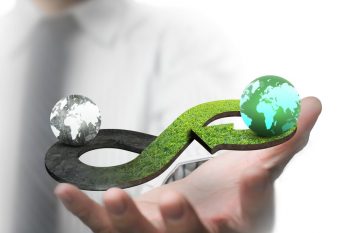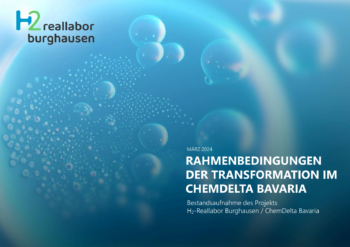What Might Germany’s Future Hydrogen Infrastructure Look Like?
The paper “Techno-economic modeling of the future role of grid-based infrastructure for hydrogen and CO2” was presented at the 12th International Energy Economics Conference at the TU Wien (IEWT 2021). This article gives a brief overview of the paper’s contents, and the full (German) paper is available for download below.
In the course of the growing use of synthetic gases in the energy transition, the question arises as to the appropriate transport infrastructure for Germany. The aim is to develop a method that identifies the most cost-efficient conversion and expansion of the gas infrastructure relevant to the energy system. In this context, the paper addresses the following overarching research questions:
- From a cost perspective, is it more effective to place electrolysis and methanation at the point of power generation or consumption?
- Where and to what extent should hydrogen and CO2 pipelines be constructed or converted and what are the associated costs?
The developed method includes the options of new construction of hydrogen and CO2 pipelines and the conversion of natural gas pipelines to hydrogen pipelines, as well as hydrogen production via electrolysis at the point of consumption and conversion of hydrogen and CO2 to methane. A mixed-integer optimization determines the length and routing of a pipeline network based on economic criteria such as the costs of gas pipelines, the power grid, and CO2 capture.

Figure 2 compares the hydrogen infrastructure resulting from this paper with that from 1 . The network identified in [1] attaches more importance to the conversion of existing pipelines. However, some parallels can be found in the basic structure, such as the greater network density in the north and especially in the northwest.

The following key takeaways can be drawn from the analyses:
- The production of hydrogen in regions with surplus electricity generation and its subsequent pipeline transport is mostly cheaper than electrolysis in the consumption region. However, this is not the case if the consumptions are small and the transport distances are long.
- CO2 pipelines are only cost-effective if capturing CO2 from industrial exhaust is significantly cheaper than capturing it from the air.
- Hydrogen pipelines are initially built between regions with abundant surplus electricity and nearby centers of consumption. Accordingly, the model initially constructs hydrogen pipelines between the North Sea coast and the Ruhr region, and the Baltic Sea coast and the Central German chemical triangle.
- The simulations construct an extensive hydrogen transmission network with a length of 5,121 km in Germany for 2050. This results in specific costs for the pipeline-based transport of hydrogen of 5.27 €/MWh, which is higher than the current network fees for natural gas for industrial operations of 3 €/MWh.
The scenario-based dataset includes the prospective surplus electricity supply from renewables, future hydrogen consumption by industry and transport, and CO2 emissions captured from industrial off-gases at the NUTS-3 level. In addition, the amount of domestically produced synthetic methane is included in the analysis.
This publication was created within the project “TransHyDE-Sys”, which is funded by the German Federal Ministry of Education and Research under the reference 03HY201E. The responsibility for the content of this publication lies with the authors.
Further information:
- EEM 2020 – WEGA and MInGa – Considering regional transmission capacities for global gas market models
- Wie gelangt grüner Wasserstoff zum Verbraucher? Potenzielle Infrastruktur für Wasserstoff in Deutschland
- IEWT 2017 – Modellierung des Europäischen Gasmarktes zur Darstellung verschiedener Gasimportszenarien
- Die Gasversorgung im Wandel – Vor welche Herausforderungen Power-to-Gas die Industrie stellt

